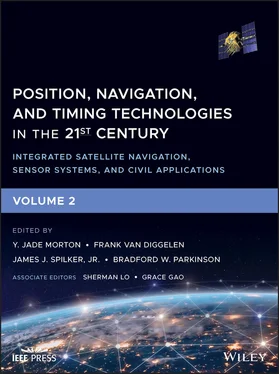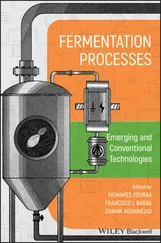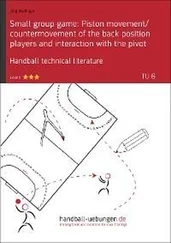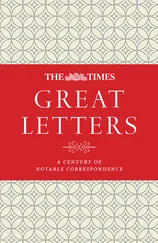2 2 A. Molisch, “Ultrawideband propagation channels,” Proceedings of IEEE, Special Issue on UWB, Vol. 97, pp. 353–371, 2009.
3 3 A. Bensky Wireless Positioning Technologies and Applications, Artech House Publishers, 2007, 311 p.
4 4 Z. Farid, R. Nordin, and M. Ismail, “Recent advances in wireless indoor localization techniques and system,” Journal of Computer Networks and Communications, 2013.
5 5 https://en.wikipedia.org/wiki/Global_Positioning_System,2016.
6 6 F. Seco, A. R. Jim’enez, C. Prieto, J. Roa, and K. Koutsou, “A survey of mathematical methods for indoor localization,” in Proceedings of the 6th IEEE International Symposium on Intelligent Signal Processing (WISP ‘09), August 2009, pp. 9–14.
7 7 O.A. Aider, P. Hoppenot, and E. Colle, “A model‐based method for indoor mobile robot localization using monocular vision and straight‐line correspondences,” Robotics and Autonomous Systems, Vol. 52, No. 2‐3, pp. 229–246, August 31, 2005.
8 8 V.A. Petrushin, Gang Wei, and A.V. Gershman, “Multiple‐camera people localization in an indoor environment,” Knowledge and Information Systems, Vol. 10, No. 2, pp. 229–241, August 2006.
9 9 IEC, “Safety of laser products – part 1: Equipment classification and requirements,” Technical Information Report 2nd edition, International Electrotechnical Commission, 2007.
10 10 C. Ciavarella and F. Paterno, “The design of a handheld, location‐aware guide for indoor environments,” Personal and Ubiquitous Computing, Vol. 8, No. 2, pp. 82–91, 2004.
11 11 J. Xiao, Z. Liu, Y. Yang, D. Liu, and H. Xu, “Comparison and analysis of indoor wireless positioning techniques,” in Proceedings of the International Conference on Computer Science and Service System (CSSS ‘11), June 2011, pp. 293–296.
12 12 J. Torres‐Solis, T.H. Falk, and T. Chau, “A review of indoor localization technologies: towards navigational assistance for topographical disorientation,” in Ambient Intelligence (ed. F.J.V. Molina), INTECH Open Access Publisher, 2010.
13 13 P. Vorst, J. Sommer, C. Hoene et al., “Indoor positioning via three different RF technologies,” in Proceedings of the 4th European Workshop on RFID Systems and Technologies (RFID SysTech ‘08), June 2008, pp. 1–10.
14 14 X. Zhao, Z. Xiao, A. Markham, N. Trigoni, and Y. Ren, “Does BTLE measure up against WiFi? A comparison of indoor location performance,” in European Wireless 2014; 20th European Wireless Conference; Proceedings of, VDE, May 2014, pp. 1–6.
15 15 M. Philipose, J.R. Smith, B. Jiang, A. Mamishev, S. Roy, and K. Sundara‐Rajan, “Battery‐free wireless identification and sensing,” IEEE Pervasive Computing, Vol. 4, No. 1, pp. 37–45, January/March 2005.
16 16 M. Vossiek, L. Wiebking, M. Gl¨anzer, D. Mastela, and M. Christmann, “Wireless local positioning—concepts, solutions, applications,” in Proceedings of the IEEE Radio and Wireless Conference (RAWCON ‘03), August 2003, pp. 219–224.
17 17 M. Rabinowitz and J.J. Spilker Jr., “A new positioning system using television synchronization signals,” IEEE Transactions on Broadcasting, Vol. 51, No. 1, pp. 51–61, March, 2005.
18 18 H. Sheng, L. Jian‐jun, X. Ying, G. Jun‐wei, and B. Hae‐Young, “Hybrid location determination technology within urban and indoor environment based on cell‐id and path loss,” Journal of Chongqing University of Posts and Telecommunication (Natural Science Edition), Vol. 16, No. 5, 46–49, October 2004.
19 19 A. Popleteev, V. Osmani, and O. Mayora, “Investigation of indoor localization with ambient FM radio stations,” in Proceedings of the IEEE International Conference on Pervasive Computing and Communications (PerCom ‘12), 2012.
20 20 AAMI, “Technical information report (tir) 18, guidance on electromagnetic compatibility of medical devices for clinical/biomedical engineers,” Technical Information Report TIR‐18, Association for the Advancement of Medical Instrumentation, Arlington, Virginia, 1997.
21 21 M. Hazas and A. Hopper, “Broadband ultrasonic location systems for improved indoor positioning,” IEEE Transactions on Mobile Computing, Vol. 5, No. 5, pp. 536–547, September/October, 2006.
22 22 R. Casas, D. Cuartielles, A. Marco, H.J. Gracia, and J.L. Falc´o, “Hidden issues in deploying an indoor location system,” IEEE Pervasive Computing, Vol. 6, No. 2, pp. 62–69, 2007.
23 23 R.J. Orr and G.D. Abowd, “The smart floor: A mechanism for natural user identification and tracking,” in CHI '00: CHI '00 Extended Abstracts on Human Factors in Computing Systems, New York, NY, USA, 2000, ACM, pp. 275–276.
24 24 G. Retscher, “Test and integration of location sensors for a multi‐sensor personal navigator,” Journal of Navigation, Vol. 60, No. 1, pp. 107–117, January 2007.
25 25 F. Evennou and F. Marx, “Advanced integration of WiFi and inertial navigation systems for indoor mobile positioning,” EURASIP Journal on Applied Signal Processing, Vol. 2006, No. 17, 11 pp., 2006.
26 26 M. Vossiek, M. Wiebking, L. Gulden, P. Weighardt, and J. Hoffmann, “Wireless local positioning—Concepts, solutions, applications,” in Proceedings of the IEEE Wireless Communications and Networking Conference, August 2003, pp. 219–224.
27 27 H. Liu, H. Darabi P. Banerjee, and J. Liu, “Survey of wireless indoor positioning techniques and systems,” IEEE Transactions on Systems, Man, and Cybernetics, Part C (Applications and Reviews), Vol. 37, No. 6, 1067–1080, November 2007.
28 28 R.J. Fontana, E. Richley, and J. Barney, “Commercialization of an ultra wideband precision asset location system,” in Proceedings of the IEEE Ultra Wideband Systems Technologies Conference, Reston, Virginia, November 2003, pp. 369–373.
29 29 B.D. Van Veen and K.M. Buckley, “Beamforming: A versatile approach to spatial filtering,” IEEE ASSP Magazine, Vol. 5, No. 2, pp. 4–24, April 1988.
30 30 F. Belloni et al., “Angle‐based indoor positioning system for open indoor environments,” 6th Wksp. Positioning, Navigation and Communication, WPNC 2009, March 2009, pp. 261–265.
31 31 P. Stoica and R.L. Moses, Introduction to Spectral Analysis, Englewood Cliffs, NJ: Prentice‐Hall, 1997.
32 32 B. Ottersten, M. Viberg, P. Stoica, and A. Nehorai, “Exact and large sample ML techniques for parameter estimation and detection in array processing,” in Radar Array Processing (eds. S.S. Haykin, J. Litva, and T.J. Shepherd), pp. 99–151, New York: Springer‐Verlag, 1993.
33 33 Z. Yang, Z. Wang, J. Zhang, C. Huang, and Q. Zhang, “Wearables can afford: Light‐weight indoor positioning with visible light,” in Proceedings of the 13th Annual International Conference on Mobile Systems, Applications, and Services, ACM, May 2015, pp. 317–330.
34 34 Y.‐S. Kuo, P. Pannuto, K.‐J. Hsiao, and P. Dutta, “Luxapose: Indoor positioning with mobile phones and visible light,” MobiCom ‘14, New York, NY, USA, ACM, 2014, pp. 447–458.
35 35 D. Hauschildt and N. Kirchhof, “Advances in thermal infrared localization: Challenges and solutions,” Proceedings of the 2010 International Conference on Indoor Positioning and Indoor Navigation (IPIN), September 15–17, 2010 Campus Science City, ETH Zurich, Switzerland, 2010.
36 36 K. Atsuumi and M. Sano, “Indoor IR Azimuth sensor using a linear polarizer,” Proceedings of the 2010 International Conference on Indoor Positioning and Indoor Navigation (IPIN), September 15–17, 2010 Campus Science City, ETH Zurich, Switzerland, 2010.
37 37 B. Fang, “Simple solution for hyperbolic and related position fixes,” IEEE Transactions on Aerospace and Electronic Systems, Vol. 26, No. 5, pp. 748–753, September 1990.
38 38 X. Li, K. Pahlavan, M. Latva‐aho, and M. Ylianttila, “Comparison of indoor geolocation methods in DSSS and OFDM wireless LAN,” in Proceedings of the IEEE Vehicular Technology Conference, Vol. 6, September 2000, pp. 3015–3020.
Читать дальше











